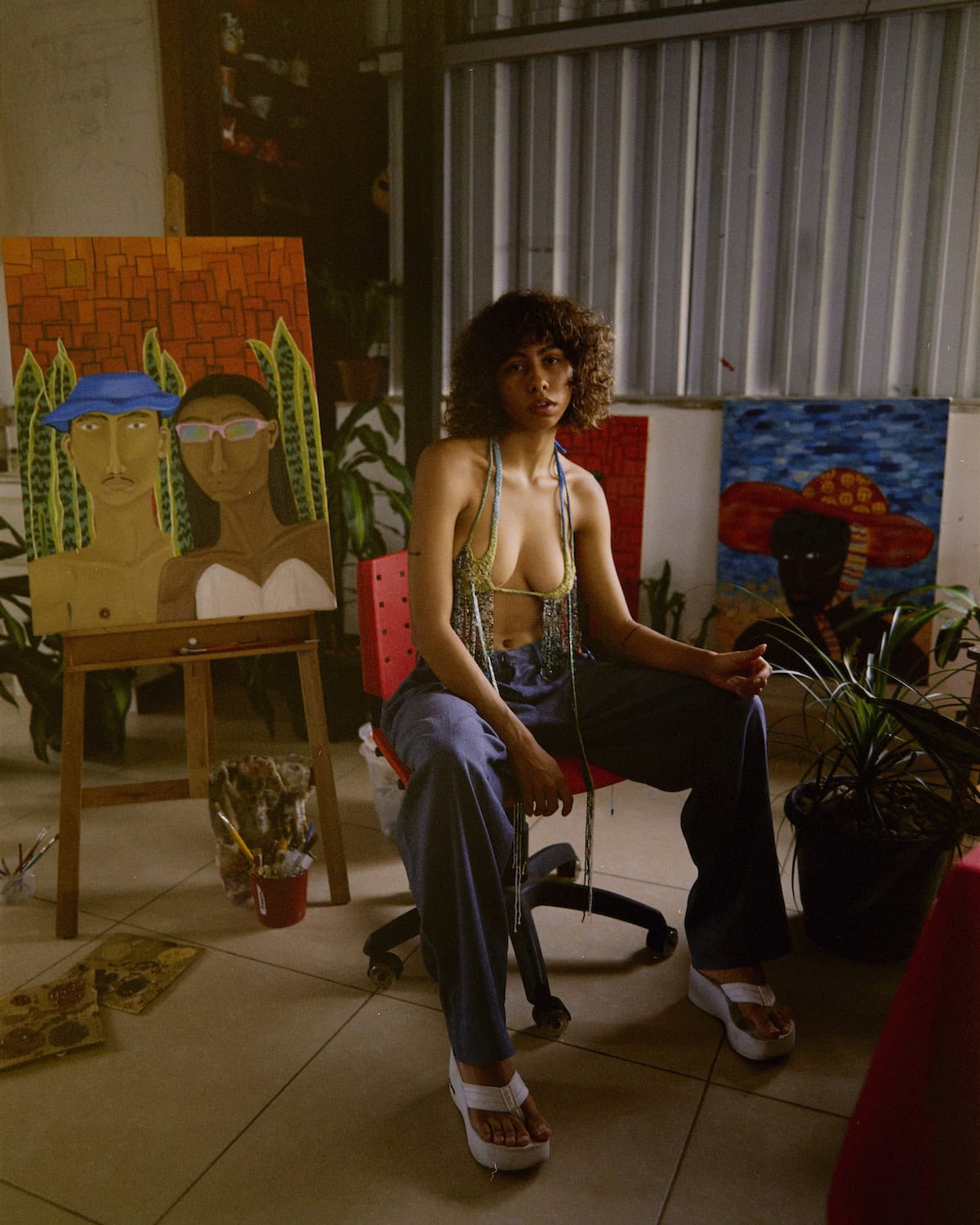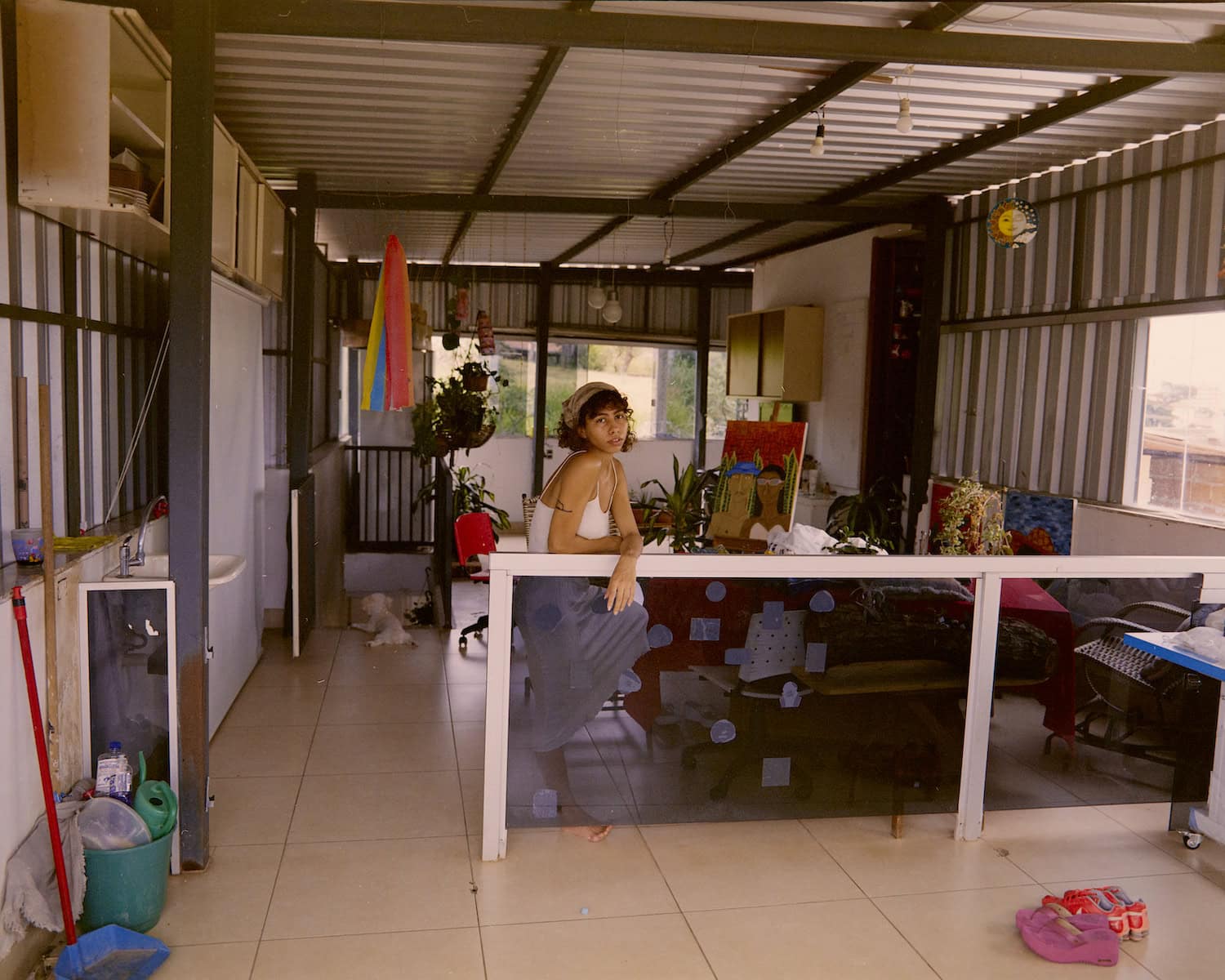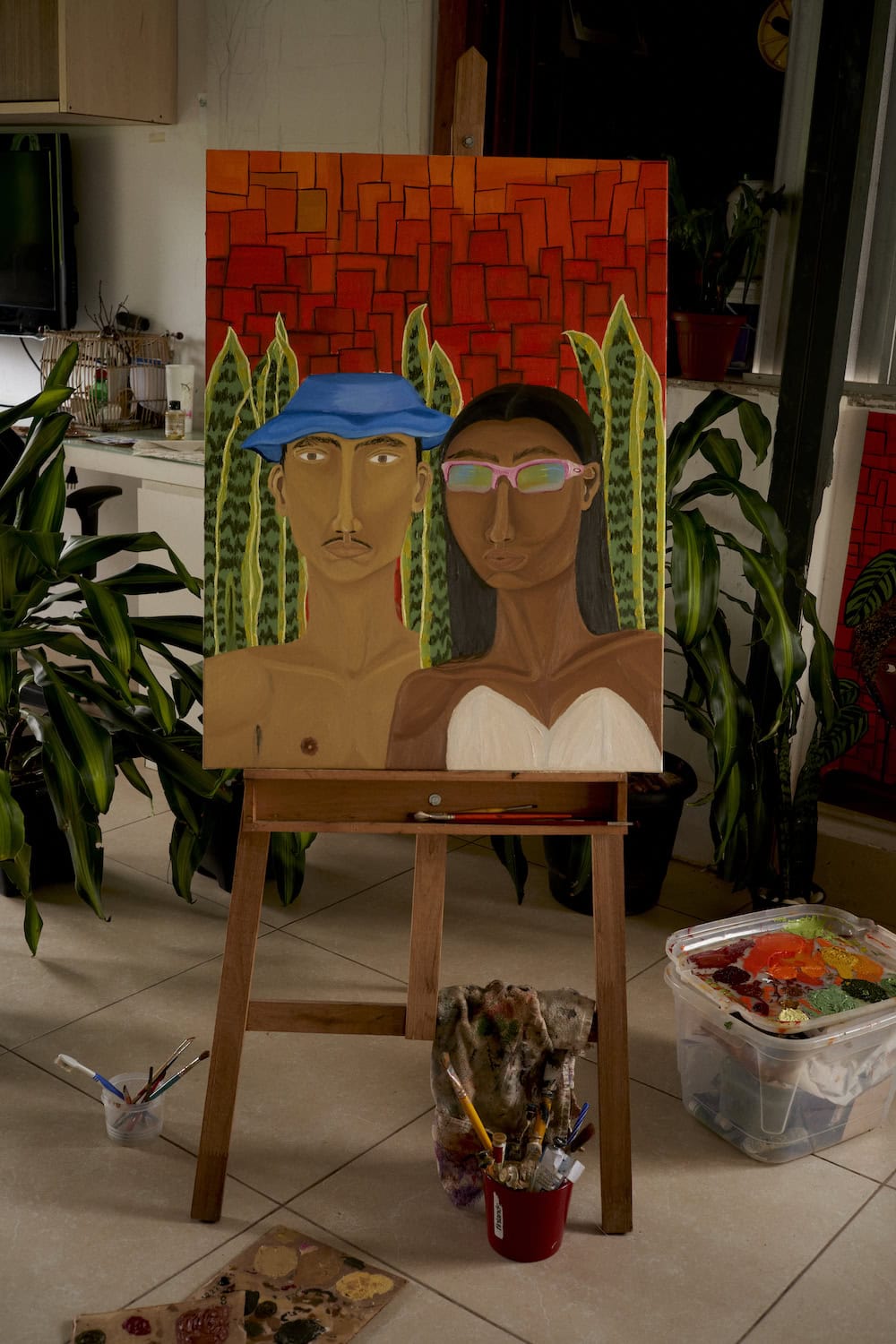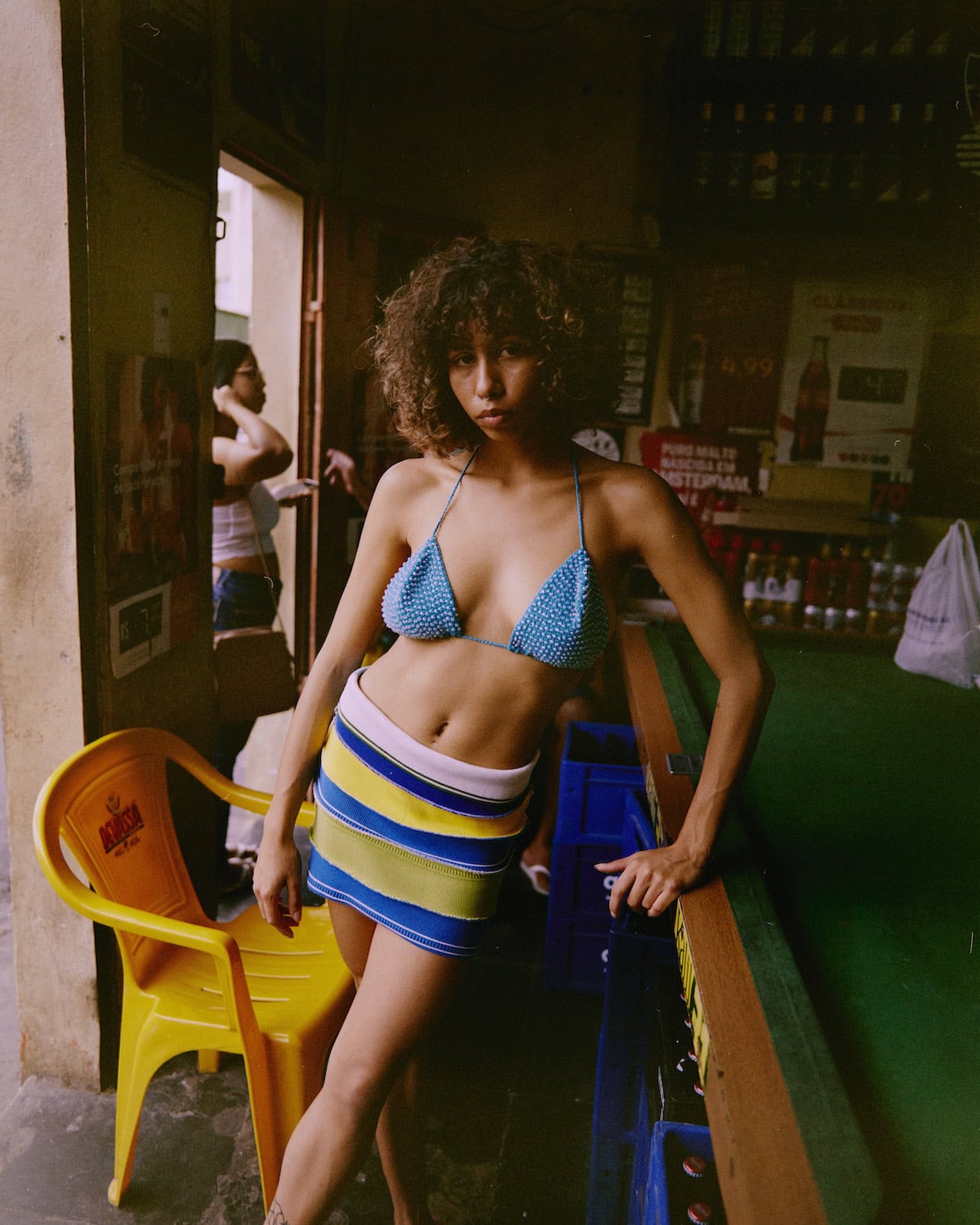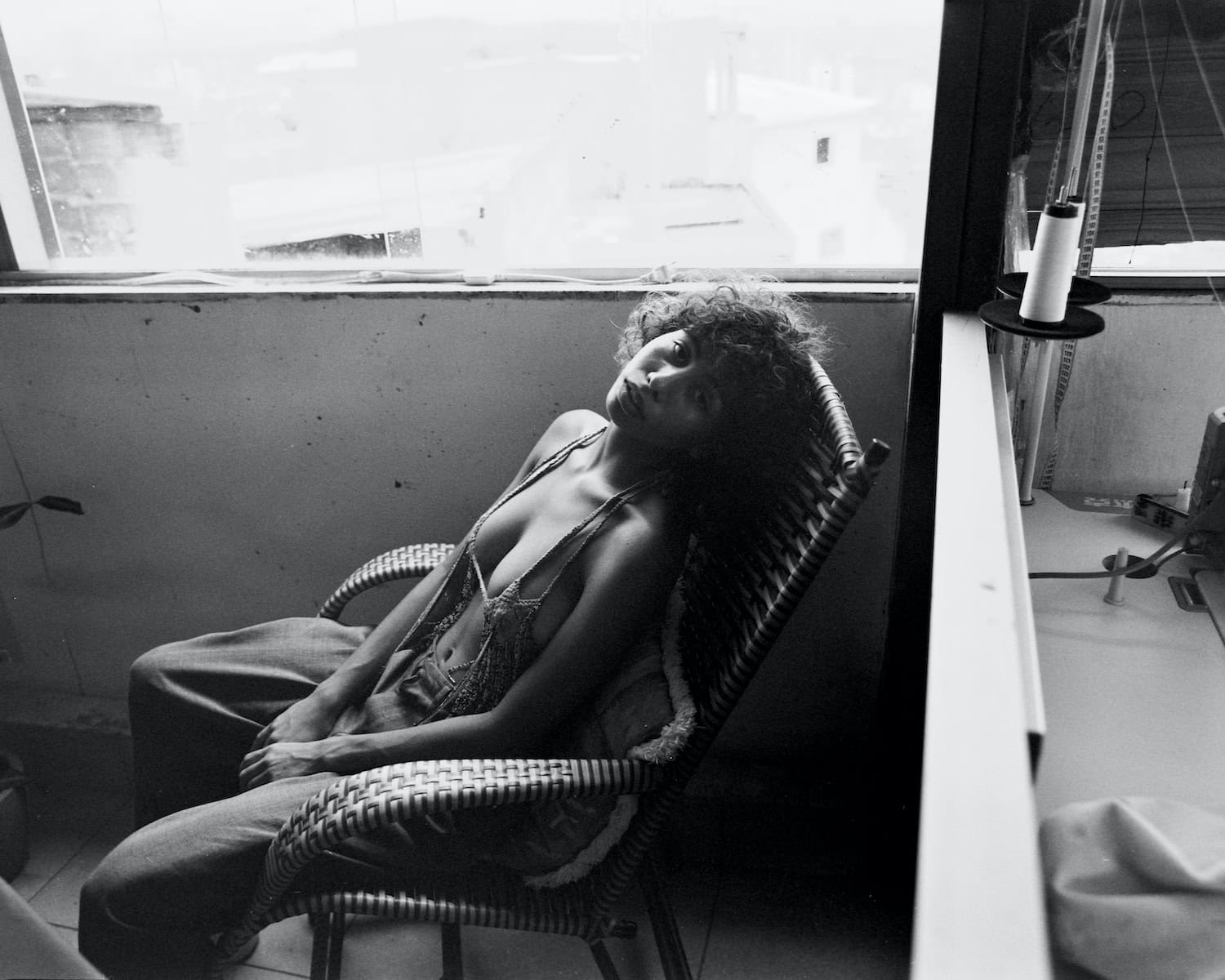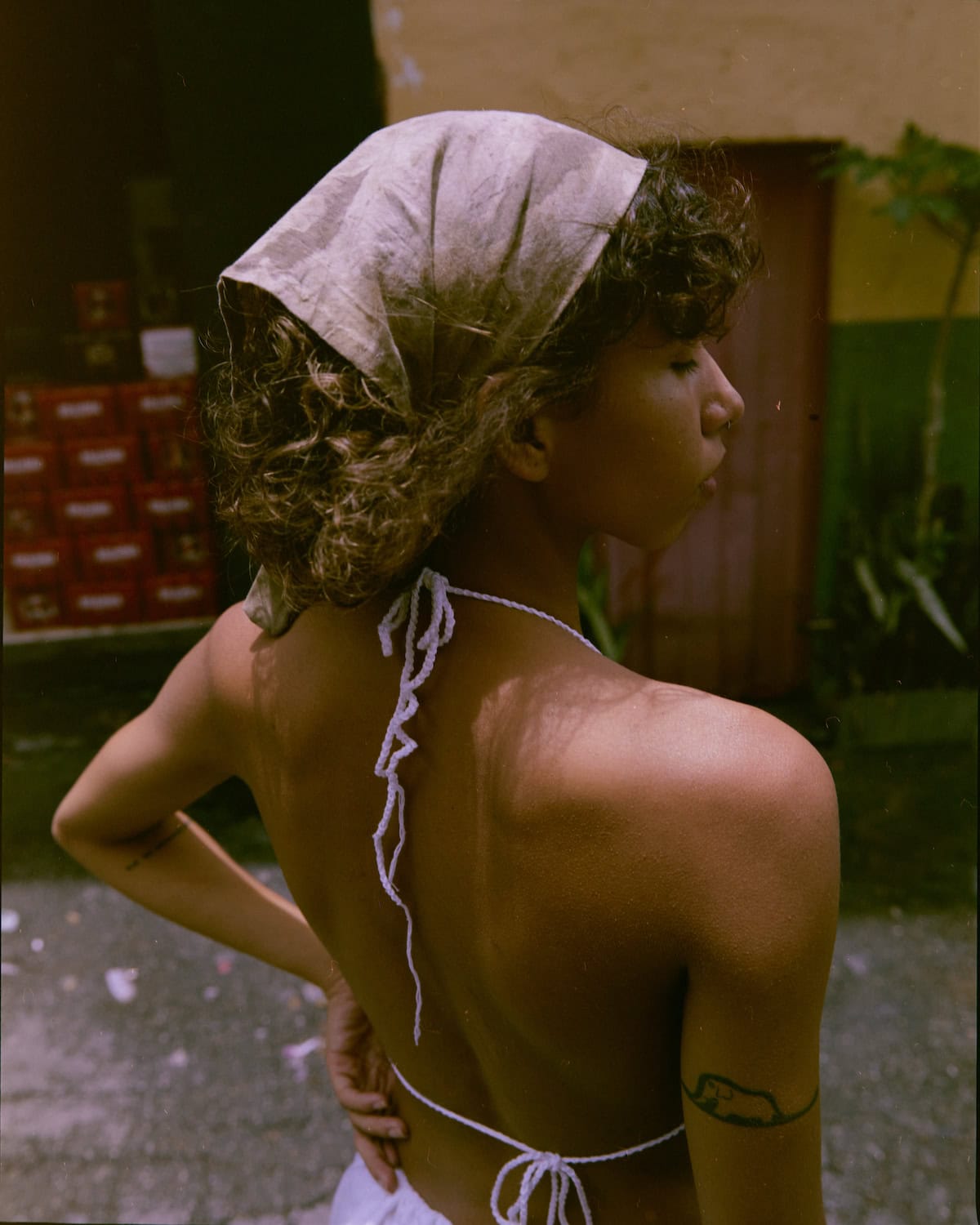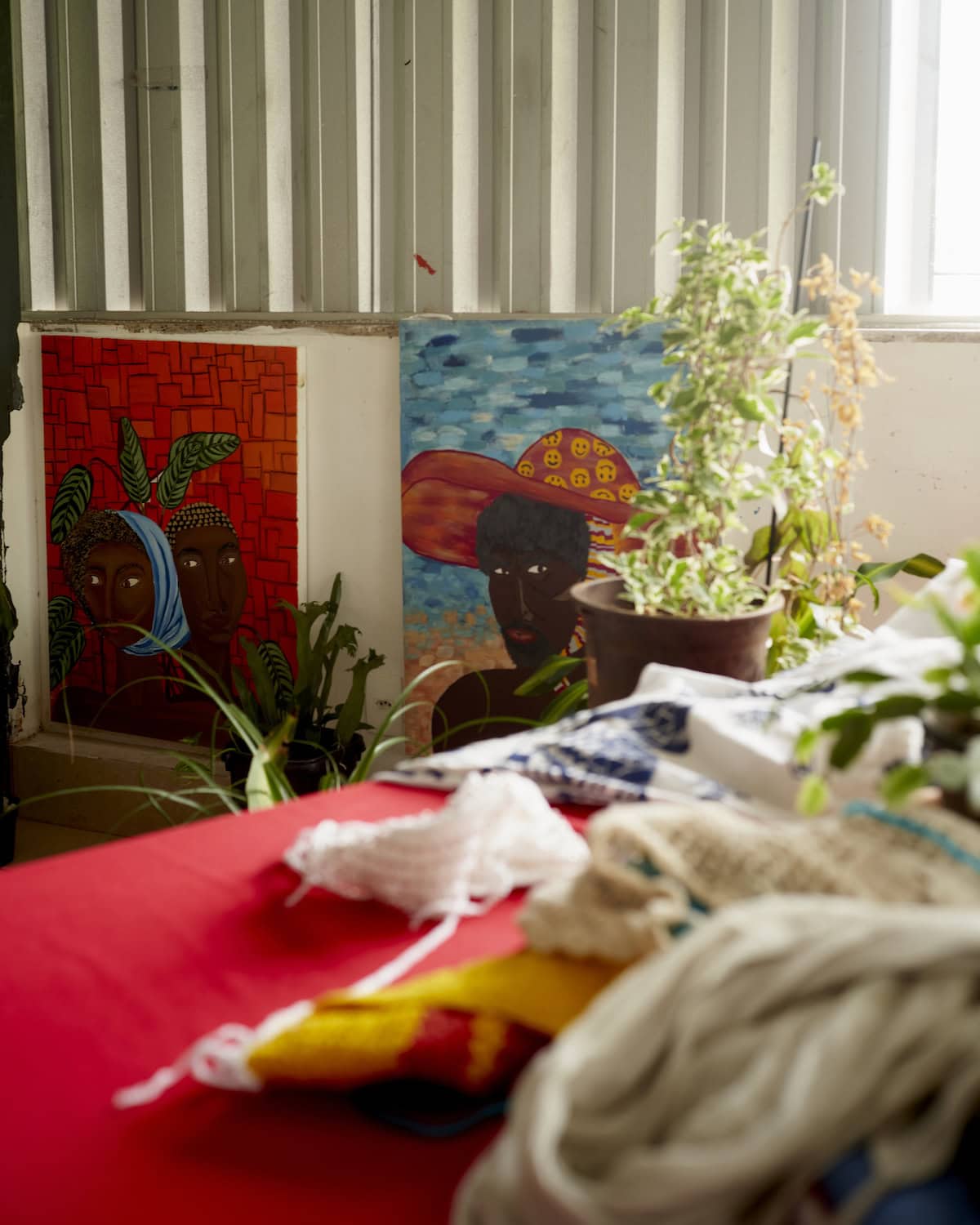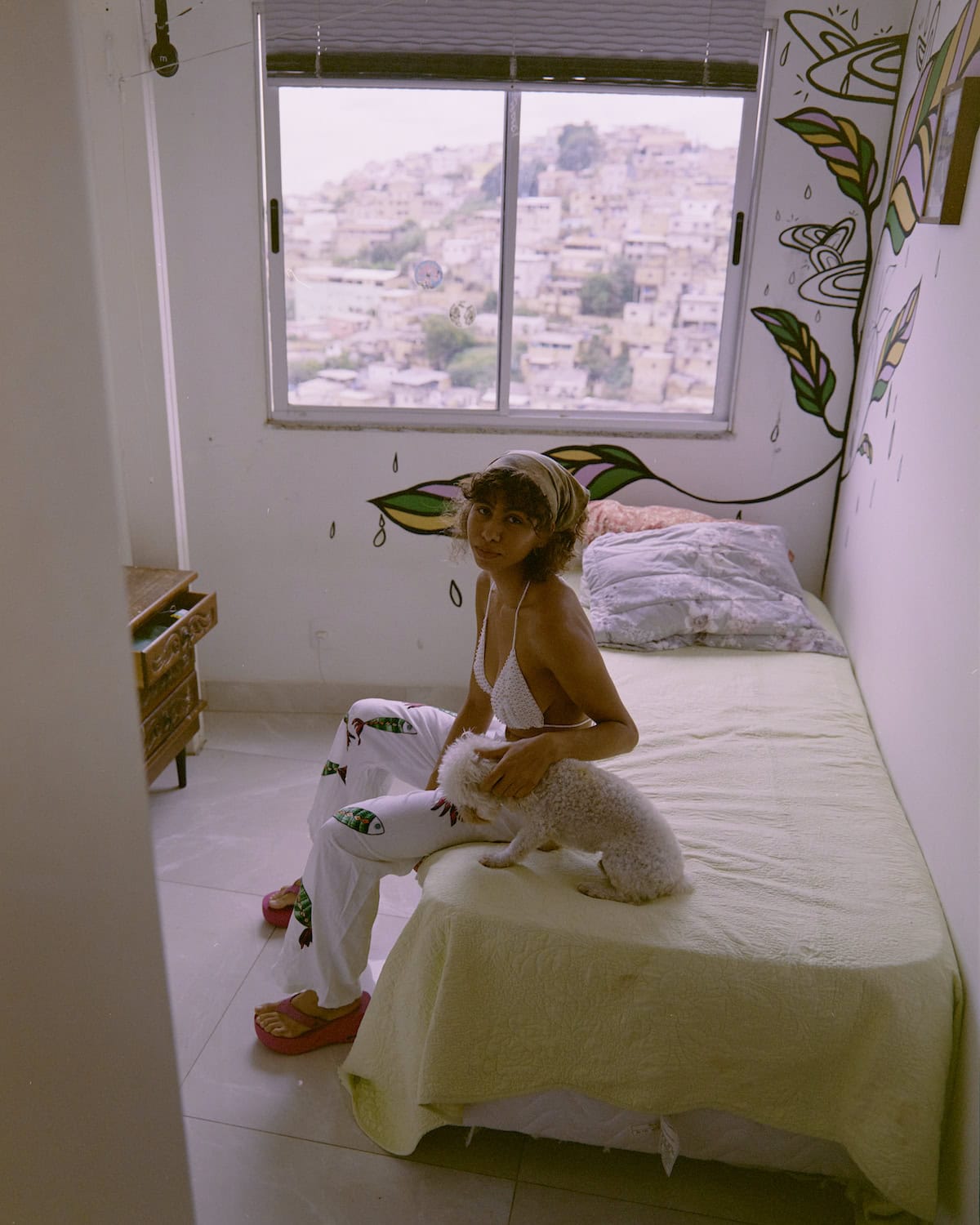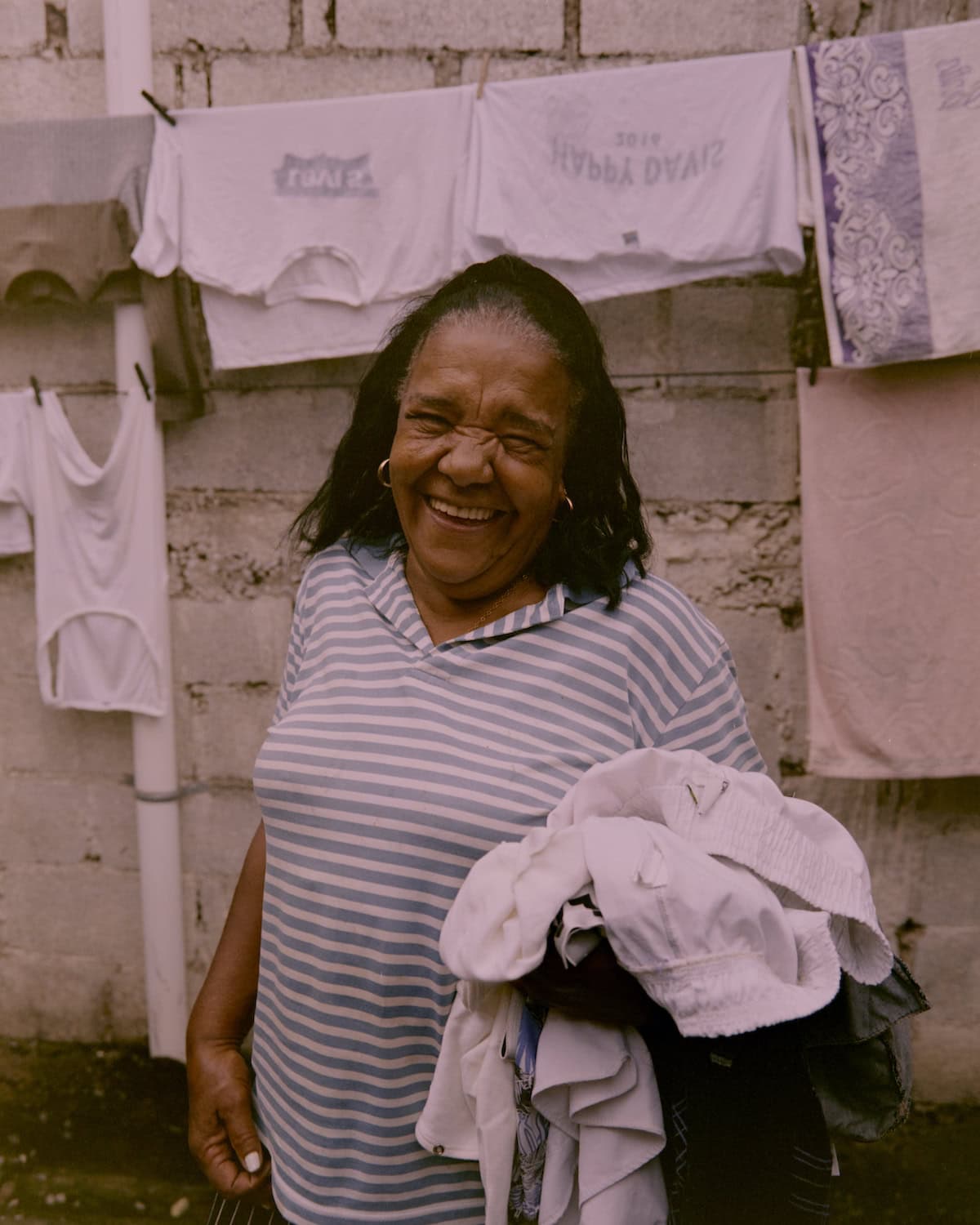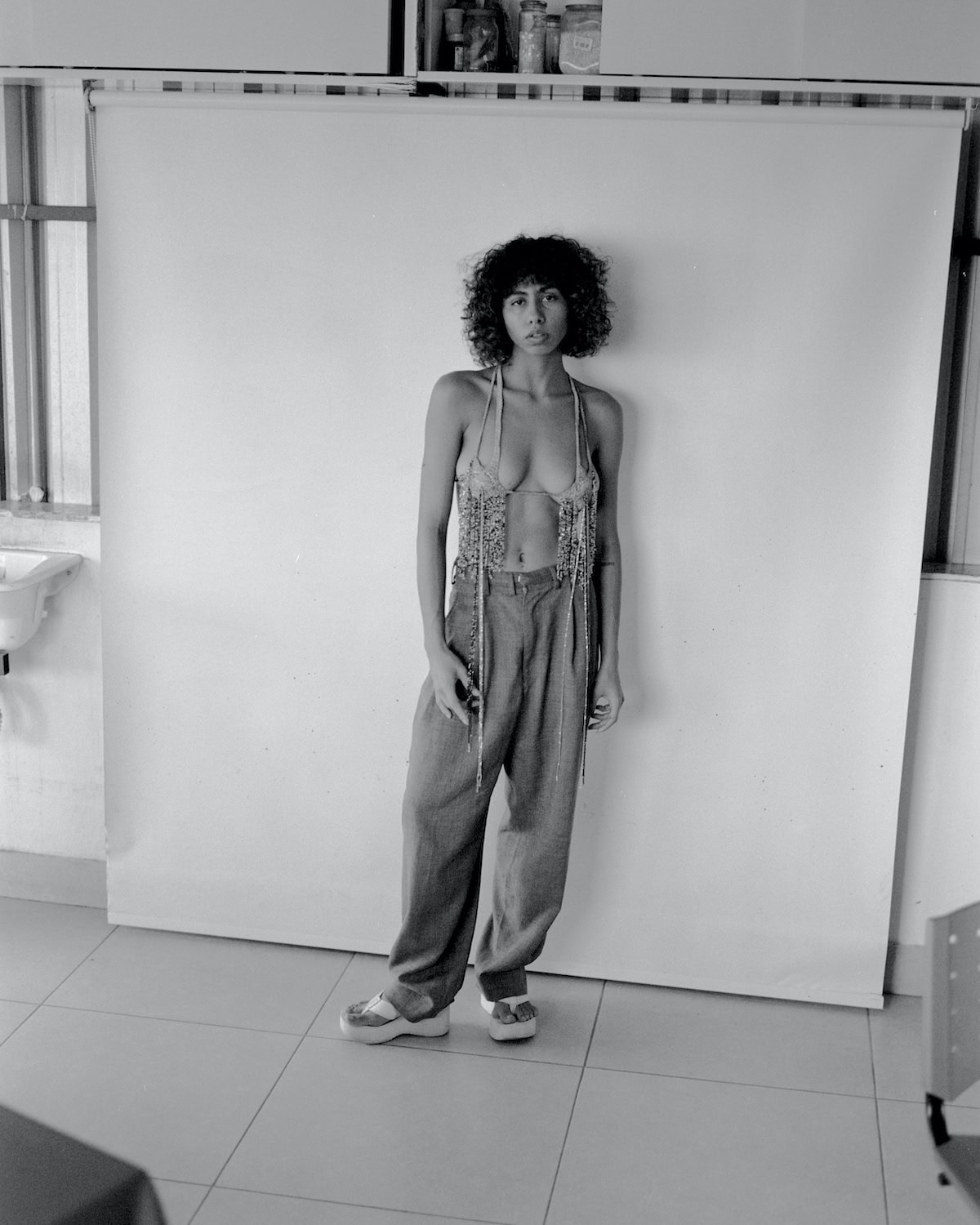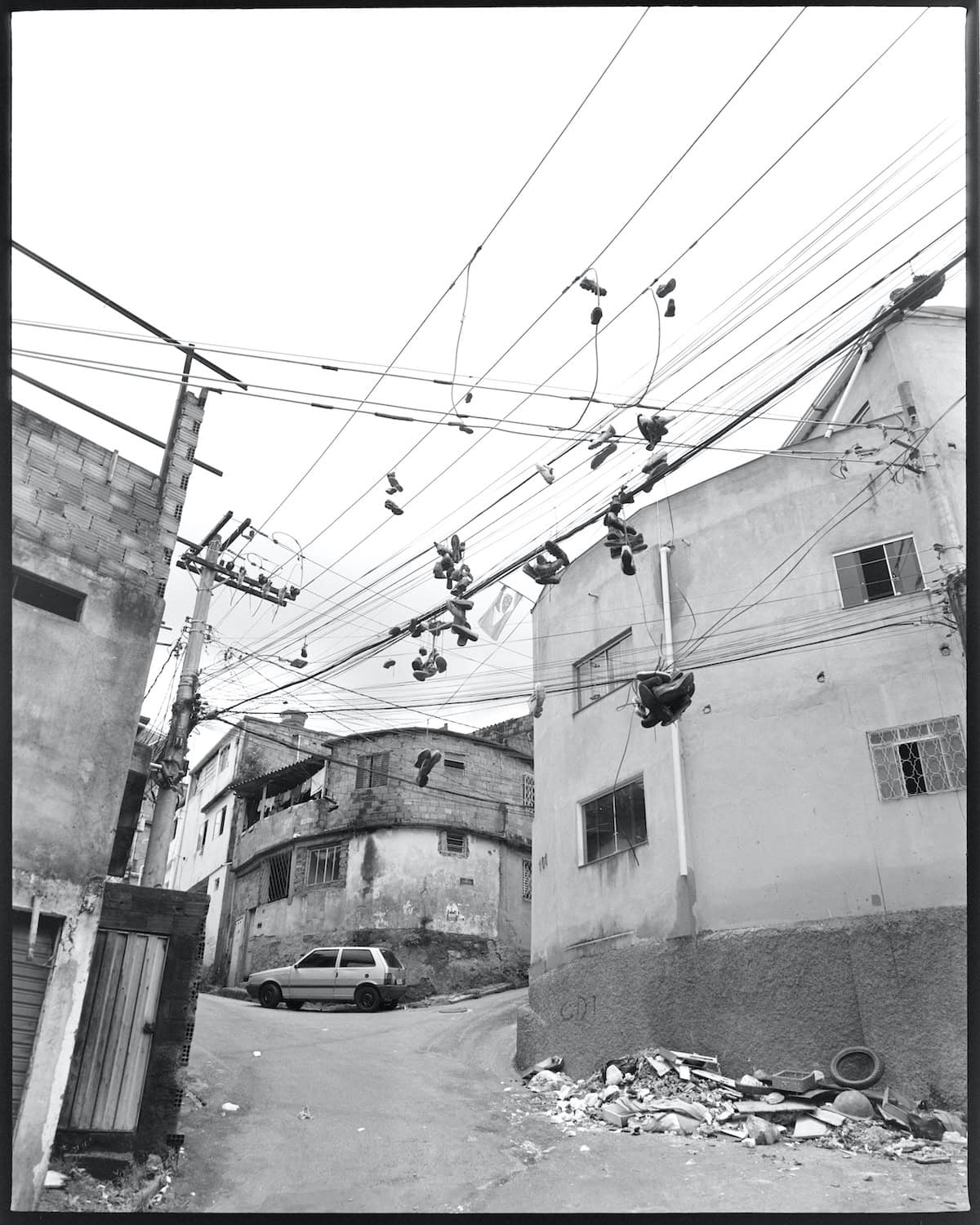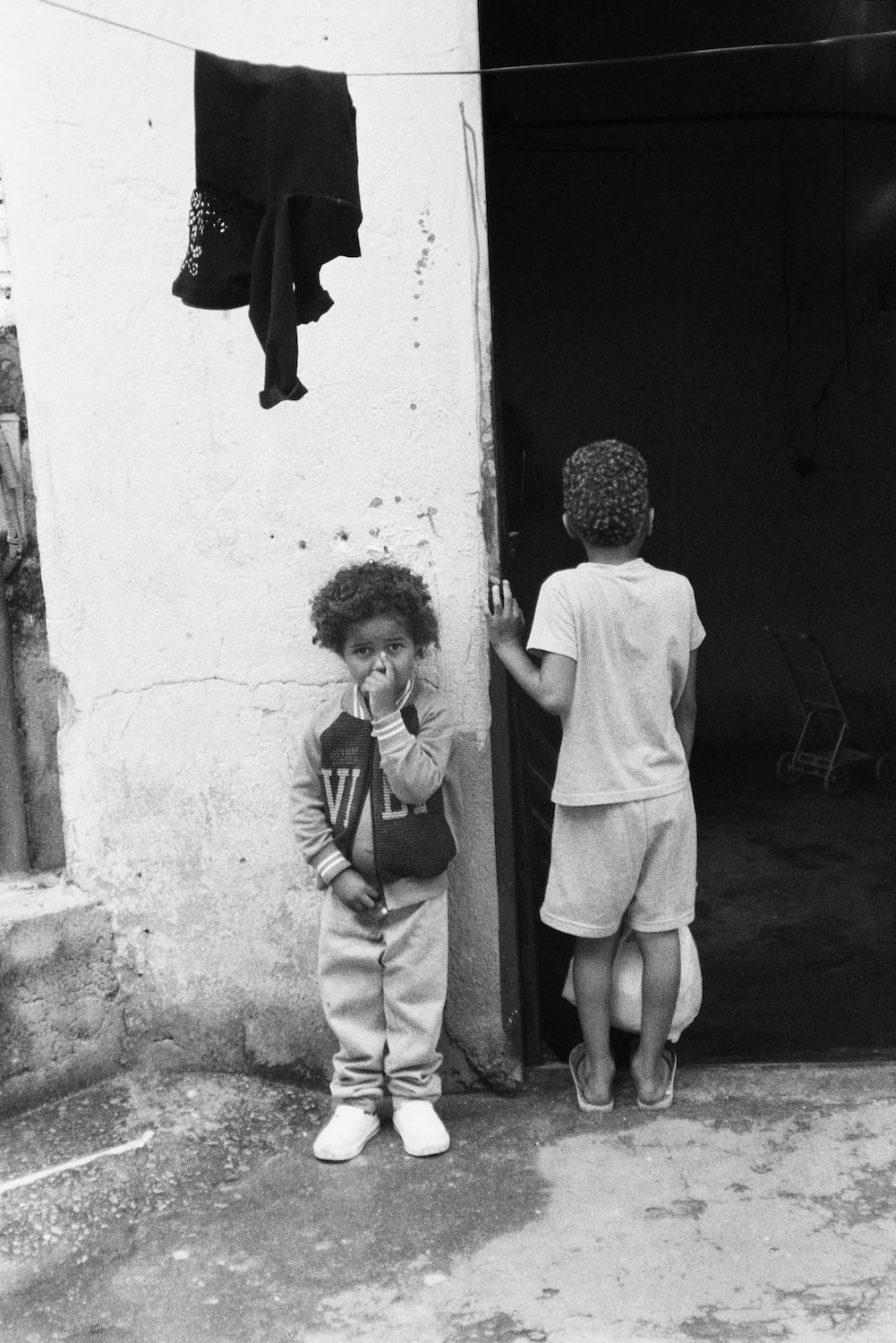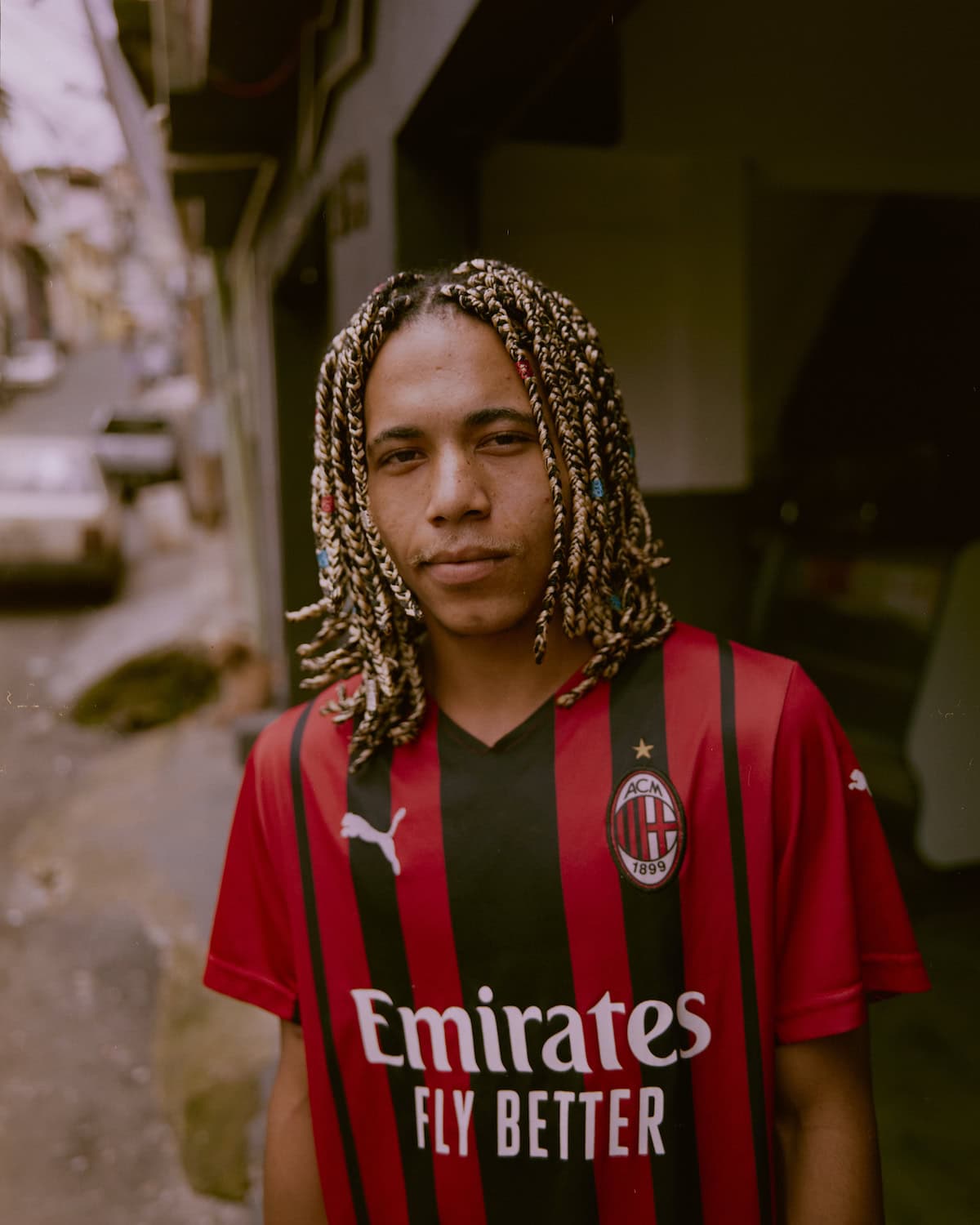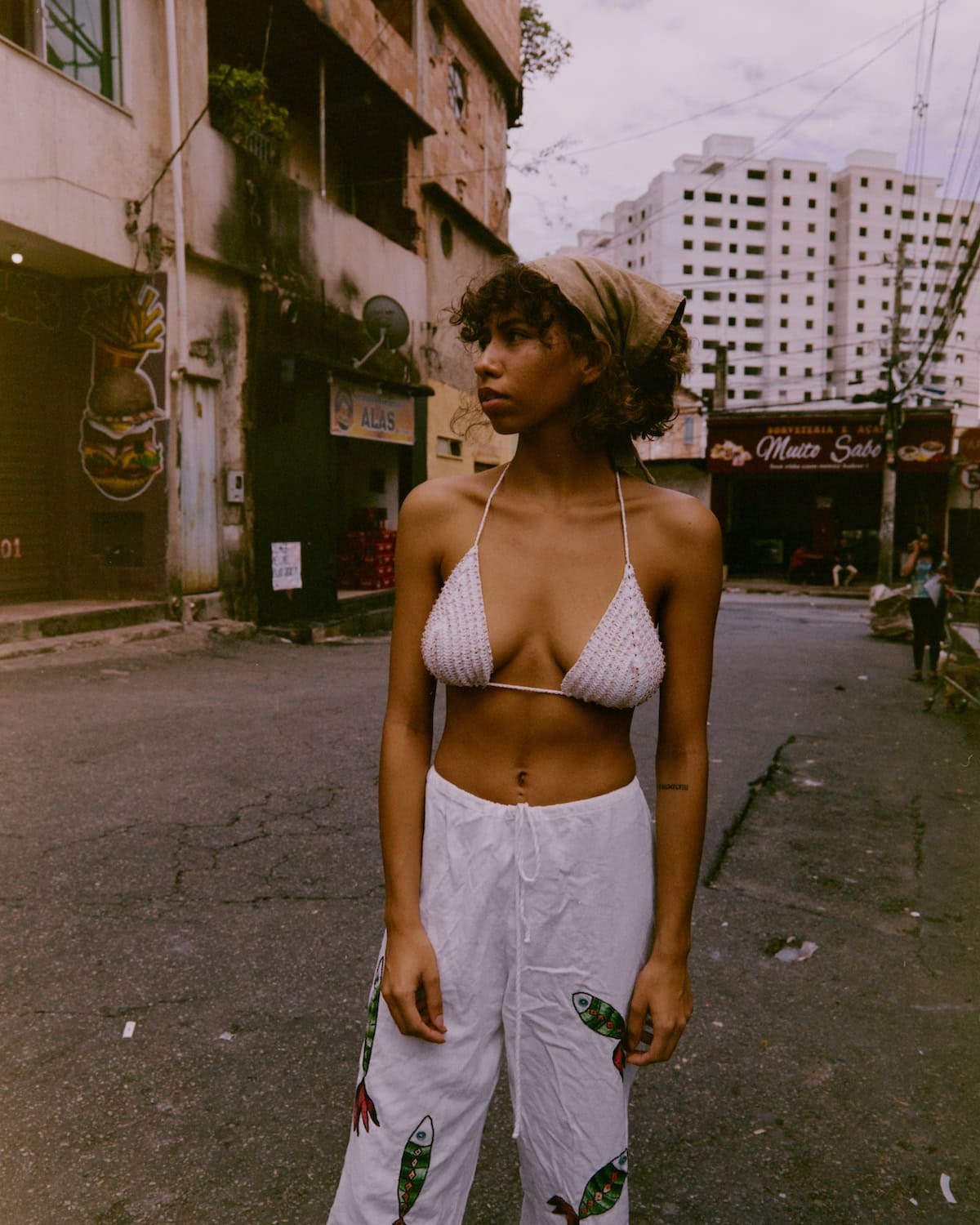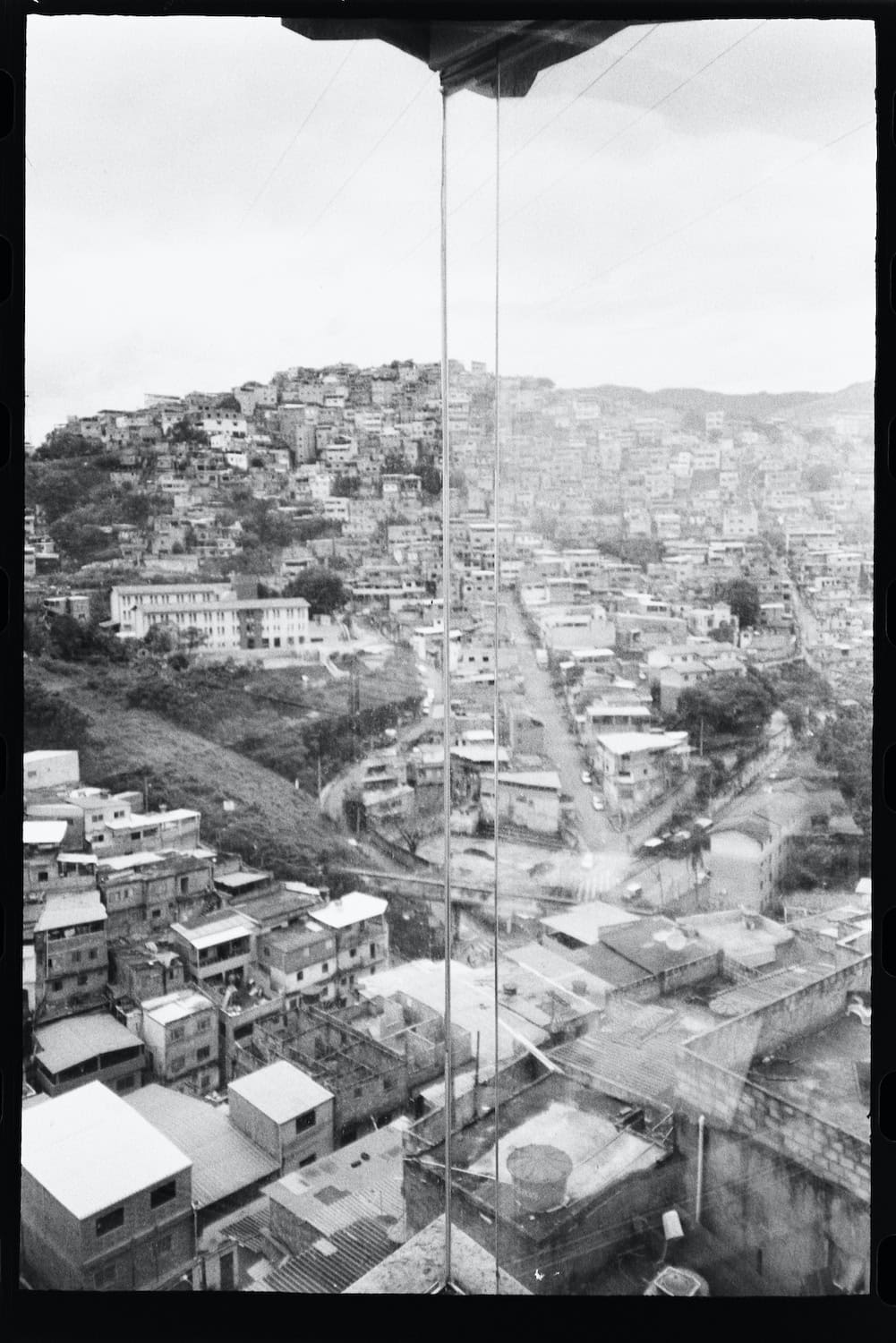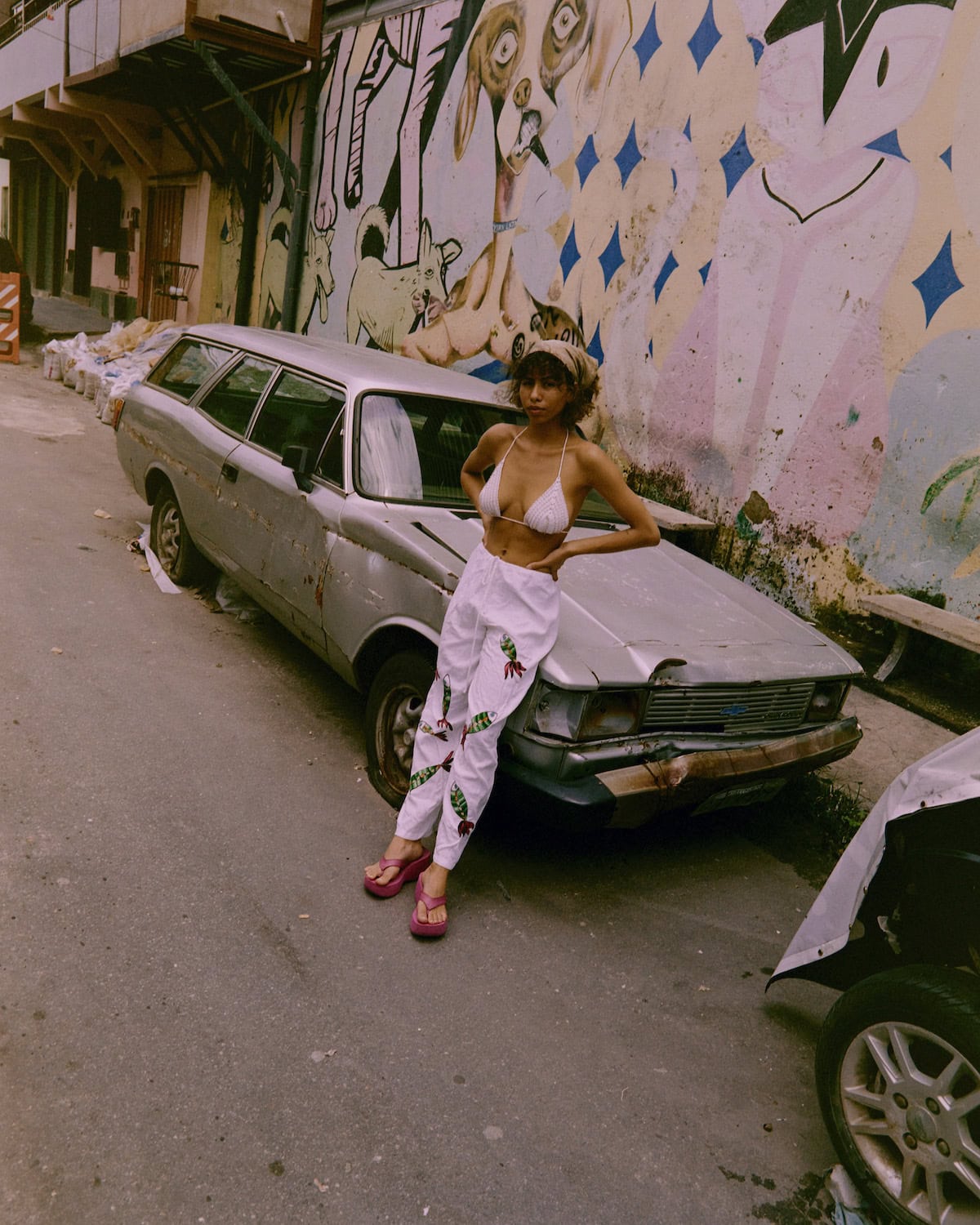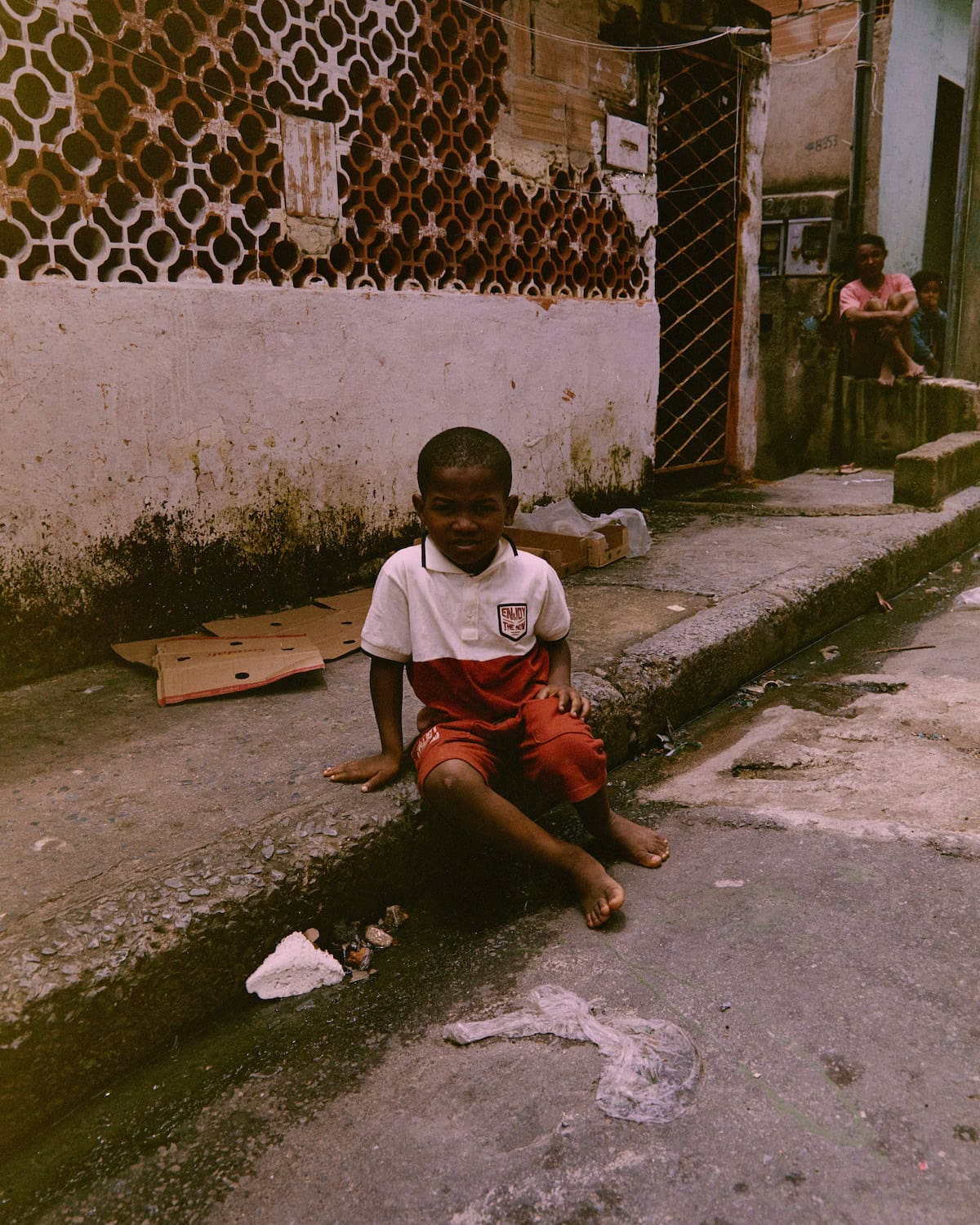This story touches on a moment in time for an ambitious and talented youth who lives in Aglomerado Da Serra, one Brazil’s largest favela in the city of Belo Horizonte. In this interview, photographer Bas van Est catches up with Isabella Rodsil after they have spent the day scaling the steep streets that surround her family home. On the top floor of the family house, Isabella and her mum share the space in which they create, paint, knit & sow clothing for friends, themselves and the kids at the local community school. The space also functions for Isabella to refine her vogueing routines. The panoramic sights and sounds of the red brick dwellings covering the mountainous landscape below are a familiar and comfortable sight, but Isabella’s drive and ambition sees her leaving that familiar heartbeat of the favella and going places further afar.
Bas van Est: Can you tell us a little bit about yourself? Where are you from and where did you grow up
Isabella Rodsil: I was born in the hospital within my community on April 22, 2002. Today it no longer functions as a maternity ward, so we don’t have any more children being born within the peripheral territory where I live. I’m 20 years old, and I grew up in Belo Horizonte, the capital of Minas Gerais, in one of the largest favelas in Brazil (Aglomerado da Serra). Because I was born in a favela, a contemporary Quilombo territory, I see myself as a person, an artist from the periphery. I’m in a new phase of recognising myself as an artist breaking free from colonial thoughts. I find myself in dance, fashion, and fine Arts. I did 10 years of classical ballet, and for the past 5 years, I’ve been immersed in the Vogue dance style, which is part of the ballroom culture in Latin America. Until last year, I worked as a Commercial Model for brands and advertisements, but I took a break. I enjoy making my own clothes; I love the fashion aspect that allows me to be creative and a director. Fashion as a form of creation has been present in my life from a very young age. Oil painting has been my most recent form of expression for people to see; it’s a side of me that I hid for a long time but I now feel that I can more easily align with the other arts. I see myself as a multimedia artist and a peripheral student.
BVE: What about your family at home?
IR: The family I live with today at home consists of 4 people: my father, my mother, and my dog. It also includes my girlfriend, who lives here a few days a week. I have a half-sister from my father’s side who hasn’t lived with me for many years, and a brother who passed away 4 years ago at the age of 20, which is my current age. I carry a family ancestry that comes from Bahia on my father’s side, and from Minas Gerais on my mother’s side. Both families have indigenous roots. My great-grandparents were “caboclos” and Brazilian Indigenous people.
BVE: How do you usually fill your days in the week? Work, hobbies, dance?
IR: My week is divided into many activities. Most of the time, I find myself studying. I really want to secure a spot at a university that will provide me with a broad range of academic knowledge to enhance my potential. That’s why I study every day, preparing for the exam at the end of the year. I study dance, fashion, and painting in a self-taught manner. At the moment, I work freely with art and culture. However, I am looking for a stable job that generates a monthly income and allows me to invest in production and releases.
BVE: This is the second time we meet. The first time was two years ago when we also photographed in the favela. The language barrier was strong but we found a connection over music, especially that of Tyler the Creator. What music is most influential to you right now?
IR: I can’t live without music; it accompanies me every day. Living in the favela, it’s hard not to hear music, even when it comes from a sound system playing Funk, especially since I’m someone who is trained in dance as well. During my pre-adolescence and adolescence, my brother was the biggest musical influencer in my life. He used to listen to 50 Cent and other American rappers on a DVD player. When I was younger, my uncles had a Brazilian rock band, but my memories of that are short-lived. However, with these influences, I developed a taste for music and musical styles that are not just present in the periphery. I love listening to artists like Tyler the Creator, Solange Knowles, and contemporary black singers. Currently, I’m really into listening to sambas by Zé Keti, MPB (Brazilian Popular Music) with Luedji Luna, Funk, Trap, and Vogue beats. Percussion has also become a big part of my life. It has been three years since I started playing percussion in carnival blocks. I have also started studying singing.
BVE: You have recently taken up painting. What or who inspired you to start making oil paintings?
IR: What inspired me to start painting precisely on canvas was the understanding that there I would be able to imprint my lucid reality about my peripheral experiences as I see and feel them. It would also be a way to preserve and create a physical historical source. It’s very powerful to walk in peripheral territories and realize that the beauty generated here is so seldom seen. Another thing is that thinking about fine arts gives me the freedom to create as I can and as I know, and to incorporate fashion and dance within it. Speaking of people, my girlfriend, Raissa Delmondes, who is a visual and fashion artist as well as a skateboarder, was someone who rekindled the feeling that painting is not confined to a single place. I have worked painting clothes before, and that process exhausted me after a long time. However, the way painting enchants me made me think about where to shift the paint, and my girlfriend was someone who played a role in rediscovering what already existed within me, albeit in different artistic realms. Another significant experience was when I worked as a painting assistant for the visual artist Pedro Neves. This moment was important for me to consider how to work with paint on canvas full time and, of course, as a career and profession.
BVE: I was impressed to see the level of detail and style progression, even within just the three that you had on display for us. Do you see yourself making a business out of selling your paintings?
IR: Yes, definitely! I imagine all the areas I study within art becoming a source of income. Starting to paint brought me a new dream: to reach galleries, museums, and projects that inspire people from my community to be in those places. It’s also a dream to make people see that peripheral art has the potential to occupy institutional and conceptual spaces. To achieve that, I need to work hard on my projects to get them there.
BVE: Last time I visited we stayed close to your favela at our mutual friend Antonio’s house. Every evening the hills would come alive with the sound of wooden spoons hitting pots in protest of then-president Bolsonaro. Can you briefly describe the sentiment of your neighborhood with Lula as your new president
IR: I voted for the first time in last year’s elections, and I must admit that I was a young person who grew up without much political knowledge. I already knew that Bolsonaro was not someone fit for the presidency of the country. I believe that people living in favelas, who are black and come from socially deprived backgrounds, protest every day when they leave their homes, although in a subjective way. The day of the pot-banging protests was a specific moment when we recognized that it would be impossible to continue with former President Bolsonaro in government. People in favelas were not born to learn about politics because the Brazilian government had already decided that even before becoming democratic. We are the product of colonization, with all the associated consequences. We are marginalized people who, in the end, many do not have the time to think about what politics is, but today I think that the presence of young people within peripheral families is bringing awareness to parents, grandparents, and uncles about the need to start caring about Brazilian politics. I am happy to see Lula in the presidency once again, and I agree with his way of thinking.
BVE: And lastly, what are your plans or dreams for this year/ years to come?
IR: My plans for this year are to continue studying despite all the difficulties and reach university. I also have plans to paint and show some of my works in an exhibition. In fashion, I intend to plan and create an editorial with my pieces that involve dance and visual arts. My dream for this year is to get into university and study in another state, probably the state of Bahia. I hope to establish a scenario for myself where I won’t have to discard the various forms of art. I want to combine different forms of expression and create a strong synergy between them, making them the way I sustain myself and generate income. Here, I understand that art is plural and allows me to intertwine one with another.
